ISSN ONLINE(2319-8753)PRINT(2347-6710)
ISSN ONLINE(2319-8753)PRINT(2347-6710)
M.Saranya1, Dr.S.Muthulakshmi2
|
| Related article at Pubmed, Scholar Google |
Visit for more related articles at International Journal of Innovative Research in Science, Engineering and Technology
This paper deals with designing of a new skip-lot sampling system having two different reference sampling plans with same sample size and two different acceptance numbers. The operating procedure of the new system and the derivation of performance measures using Markov-chain formulation are given. The designing of the system for two specified points on the OC curve and AOQL of the developed plan are given. The effect of system parameters on the performance measures are evaluated. The efficiency of the proposed sampling system is illustrated with matched SkSP-2 and single sampling plans.
Keywords |
| Acceptable quality level, Average sample number, Single sampling plan, Skip-lot sampling system, Operating characteristic function. |
INTRODUCTION |
| The acceptance sampling plans have been widely used in industries for maintaining the high quality level of the product at the minimum inspection cost. The skip-lot sampling schemes, have the provision of inspecting only a fraction of lots. Dodge [5] introduced SkSP-1 plan in chemical and physical processes to reduce inspection cost as an extension of continuous sampling plan, CSP-1 of Dodge [4]. Perry [8] proposed skip-lot sampling plan of type SkSP-2 by using single sampling plan as the reference plan and discussed the applications of the plan. Brugger [3] provided the derivation measures by employing simplified Markov-chain approach for SkSP-2 plan. Perry [9] extended the single level SkSP-2 plan to two levels of skipping inspection and derived their performance measures. |
| Vijayaraghavan [12] extended the SkSP-2 beyond two levels of sampling and using a general non-cost based approach to design skip-lot sampling plans and obtained tables using Poisson model. Govindaraju [7] studied the properties of SkSP-2 plan using single sampling plan with zero acceptance number as the reference plan. Balamurali et.al [2] proposed SkSP-R plan by including resampling and provided their performance measures. Aslam et.al [1] proposed SkSP-2 plan with two-stage group acceptance sampling plan as reference plan. |
RELATED WORK |
| Stephens and Larson [11] indicated that an acceptance sampling system consisting of two or more sampling inspection plans and the rules for switching between them to achieve blending of the advantageous features of each of the sampling plans. This motivated the researcher to design the general skip-lot sampling system with two different reference sampling plans as a generalization of SkSP-2. In this paper a new skip-lot sampling system having two different reference sampling plans with same sample sizes and different acceptance numbers is introduced. |
| Performance measures are derived for the proposed system by Markov-Chain approach. Method of designing plans is indicated. Comparison with matched SkSP-2 plan and single sampling plan are presented and indicated that improved efficiency is achieved by the new system. Effect of parameters i and f on performance measures are evaluated. Tables are constructed to facilitate selection of plans. Method of construction of tables is also indicated. |
OPERATING PROCEDURE OF THE SYSTEM |
| The operating procedure of general skip-lot sampling system (GSkSS) has the following steps. |
| 1. Start with normal inspection, using the reference sampling plan, rN. At this stage every lot is inspected. |
| 2. When i consecutive lots are accepted on normal inspection, switch to skipping inspection at rate f, using the reference sampling plan rS. |
| 3. When a lot is rejected, switch to normal inspection. Screen each rejected lot and replace all nonconforming units found. |
| This new system designated as GSkSS (i, f, n, cN, cS) – refers to a skip-lot sampling system where the normal and skipping single sampling plans have the same sample size n, but different acceptance numbers cN and cS with cN ≤ cS. where cN is the acceptance number for normal inspection reference plan, rN and cS is the acceptance number for skipping inspection reference plan,rS. If cN = cS the system degenerates into a skip-lot sampling plan of type SkSP-2 with parameters (i,f,n,c). |
MEASURES OF PERFORMANCE |
| The performance measures are derived using Markov-Chain approach due to Robert’s [10]. The states of GSkSS are defined as |
| NO - Lot rejected on normal inspection using reference plan rN. |
| NJ - j lots are consecutively accepted during normal inspection using reference plan rN, j = 1, 2, ……..,i |
| SA - lot is accepted during skipping inspection at rate f, using reference plan rS. |
| SR - lot is rejected during skipping inspection at rate f, using reference plan rS. |
| SN - lot is skipped during skipping inspection at rate f, using reference plan rS. |
| The one-step transition matrix for the GSkSS plan is presented in Table A |
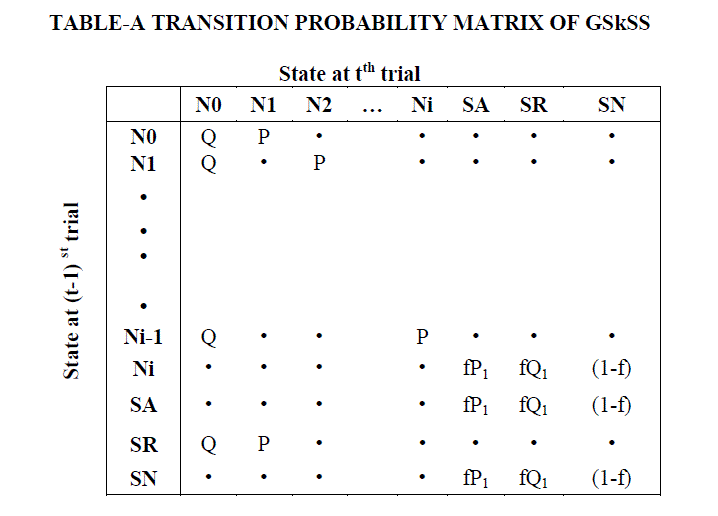 |
| In the matrix, |
| P - the probability of acceptance of a lot according to reference plan rN |
| Q - 1 – P |
| P1 - the probability of acceptance of a lot according to reference plan rS |
| Q1 - 1 –P1 |
| Using this transition probability matrix, the steady state probabilities ïÃÂðj satisfy the following conditions |
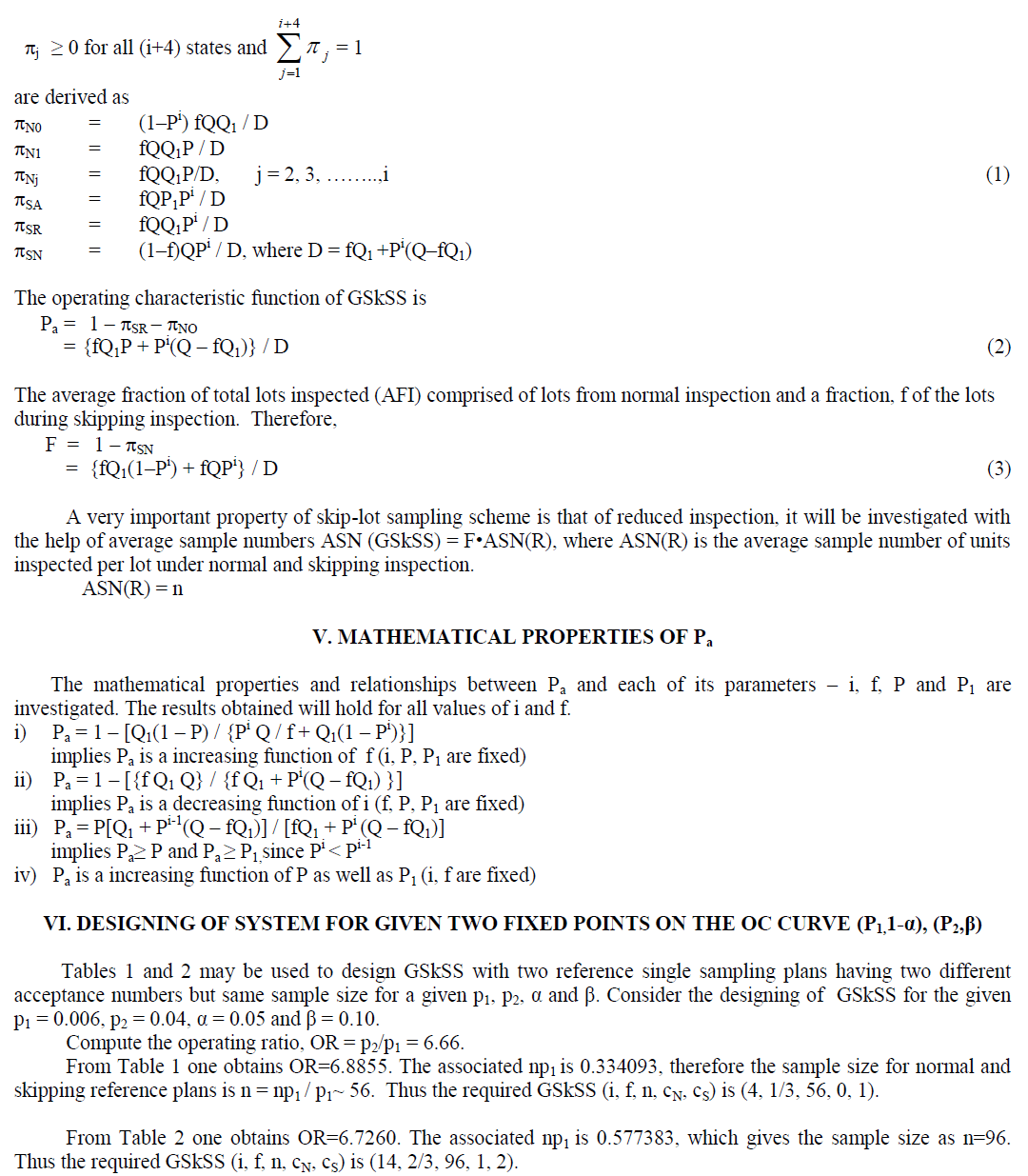 |
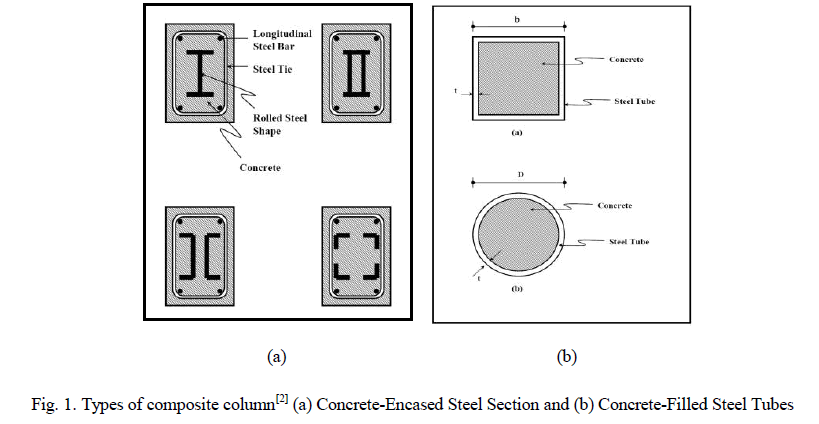 |
COMPARISON OF GSKSS WITH SKSP-2 AND SS PLANS |
| Grubbs [6] suggested a measure to compare, called "Operating Ratio" which is defined as p0.10/p0.95 where p0.10 and p0.95 are the values of p with Pa = 0.10 and 0.95 respectively. This reflects the ability of a plan to discriminate between good and bad quality. The matched GSkSS, SkSP-2 and SS plans are obtained by means of nearly equal OR values. |
| Some GSkSS and reasonably well-matched SkSP-2 plans and single sampling plans are given in Table 3 Suppose that one requires a plan for p1 = 0.015 p2 = 0.072, α = 0.05, and β = 0.10. The operating ratio is 4.8. From Table 3 |
| I) The SSP with n = 91, c = 3, np1 is 1.3663 |
| ii) The SkSP-2 plan with i = 14, f = 1/5, n = 73, c = 2, np1 is 1.09 |
| iii) GSkSS with f = 1/4/, i = 6, n = 54, cN = 1, cS = 2, np1 is 0.8127 |
| iv) GSkSS with f = 1/4, i = 8, n = 54,cN =1, cS = 2 and np1 is 0.7955 |
| Further, the last two columns in table 3 when subtracted from 1.0 represent the percent reduction in the sample size of GSkSS with that of SkSP-2 and SS matched plans. This shows reduction in sample size for GSkSS over SkSP-2 plan and single sampling plan. This suggests the economy of the proposed plan. |
CONCLUSION |
| A new skip-lot sampling system called GSkSS has been proposed in this paper. The two points on the OC curve approach is adopted to design parameters of the proposed system. Various measures of performance for proposed system have been derived using Markov chain model. The proposed system is found to be more efficient than the matched single and SkSP-2 plans. It is found that the proposed system requires the less number of sample units for the inspection purpose than the conventional single and SkSP-2 plans. So the proposed system is useful in reducing the cost and the time of inspection of the material or the product. |
CONSTRUCTION OF TABLES |
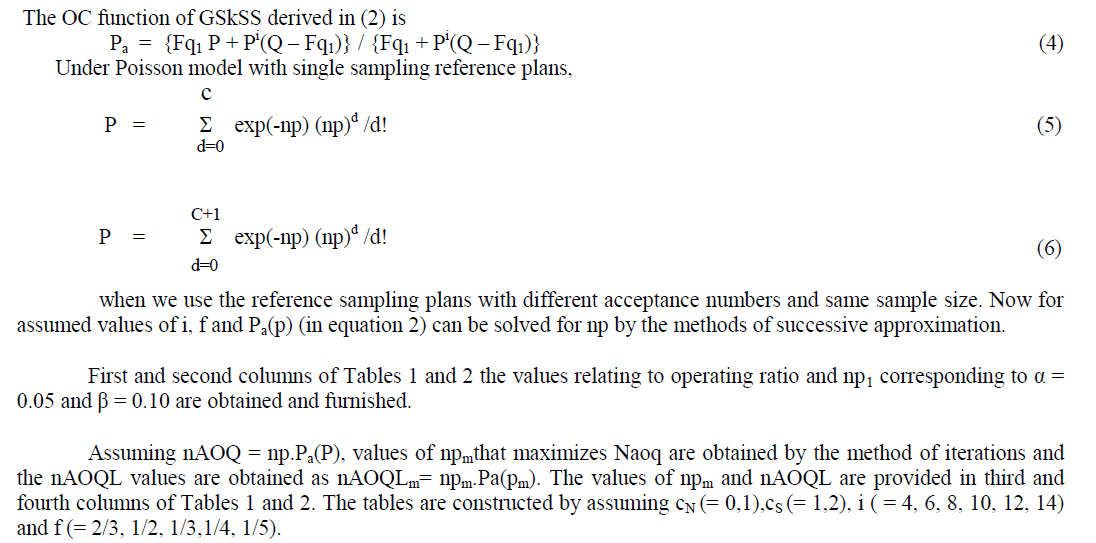 |
References |
|
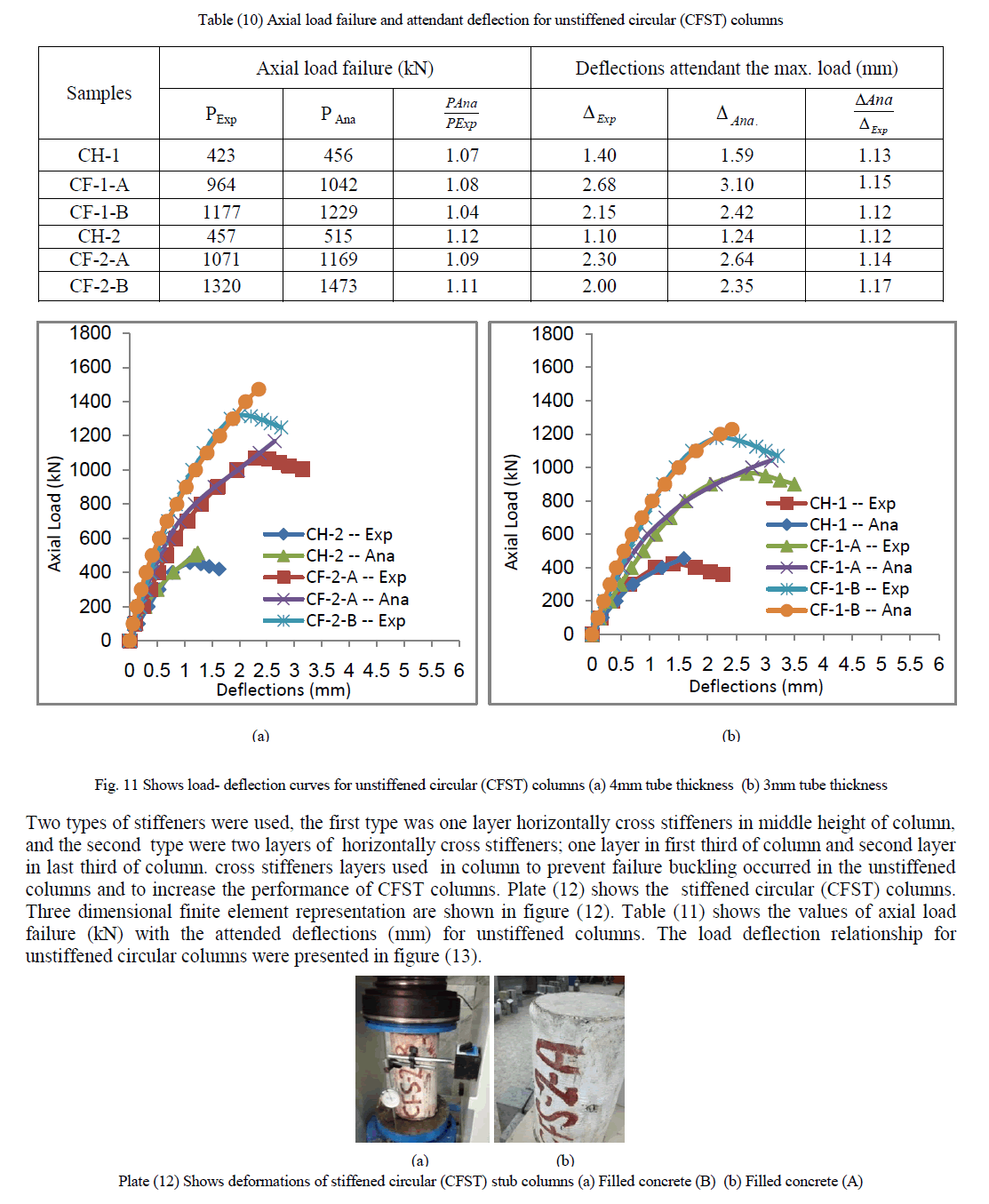 |
 |
 |
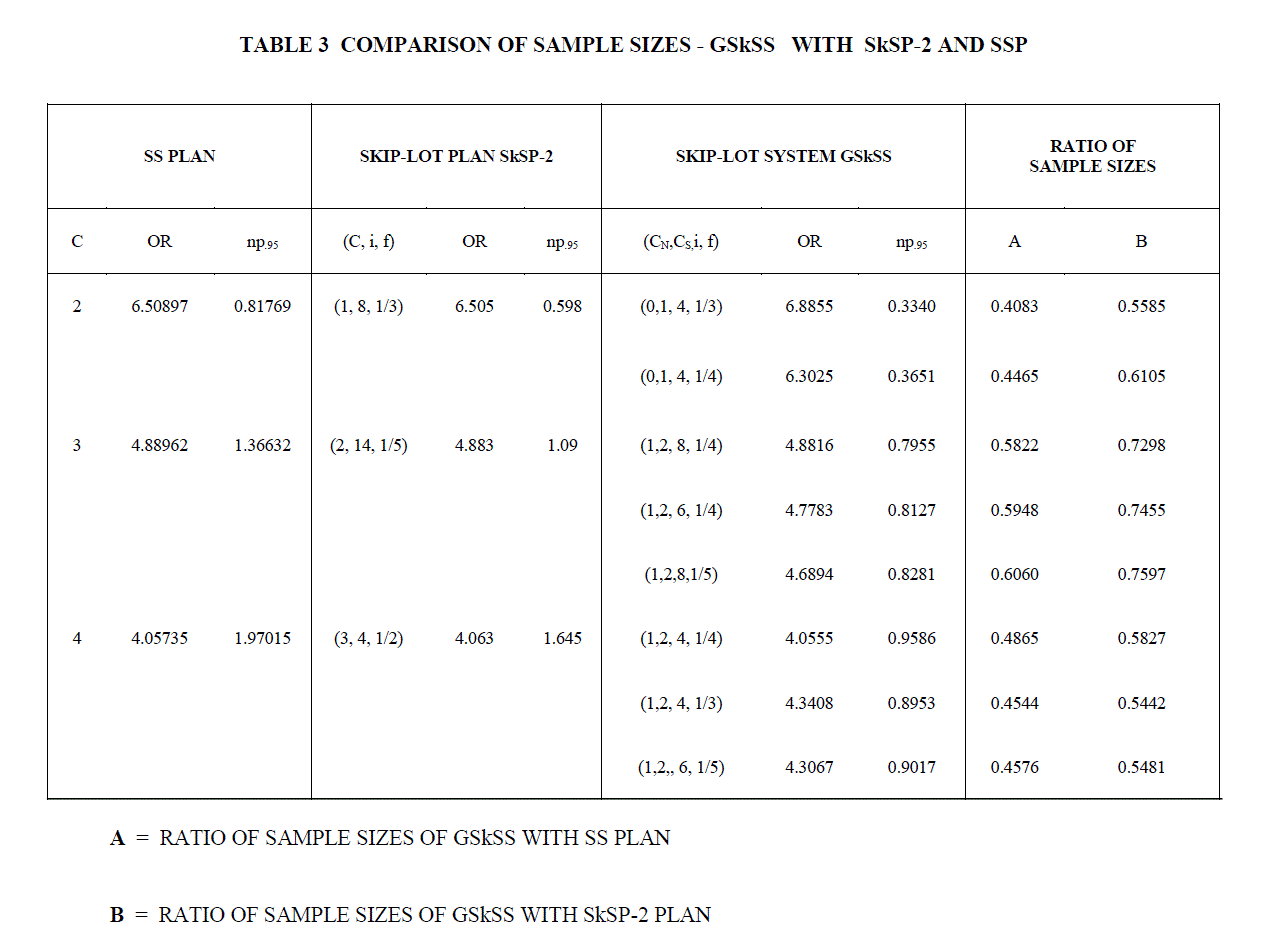 |